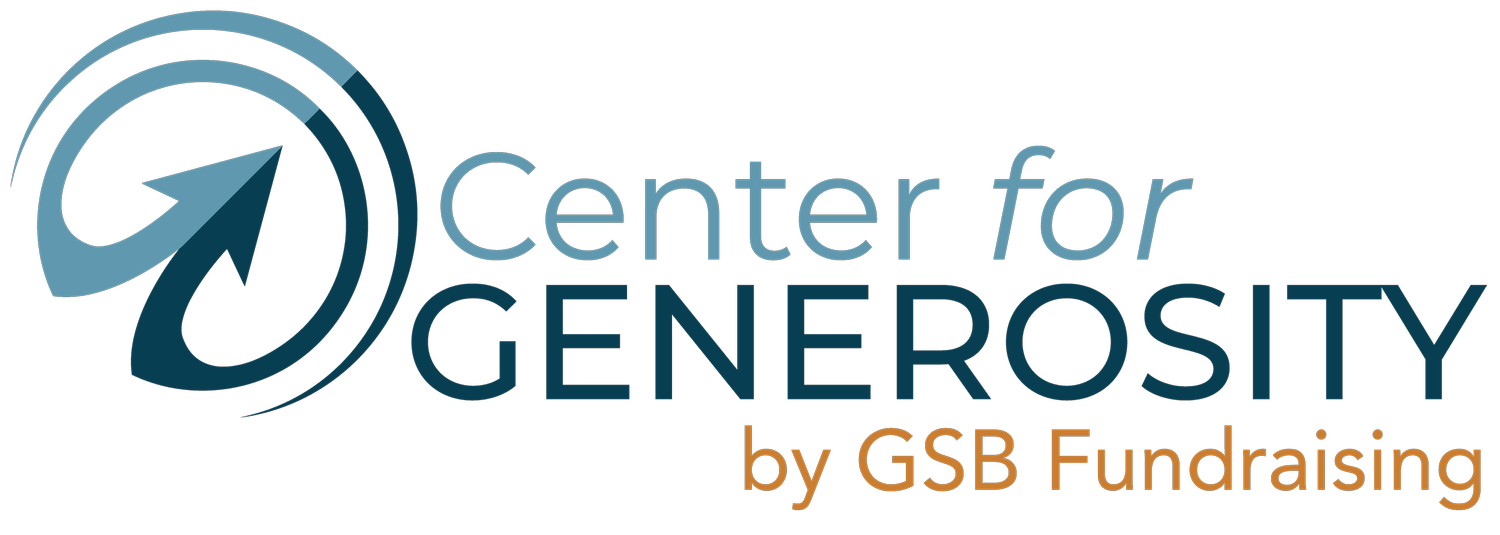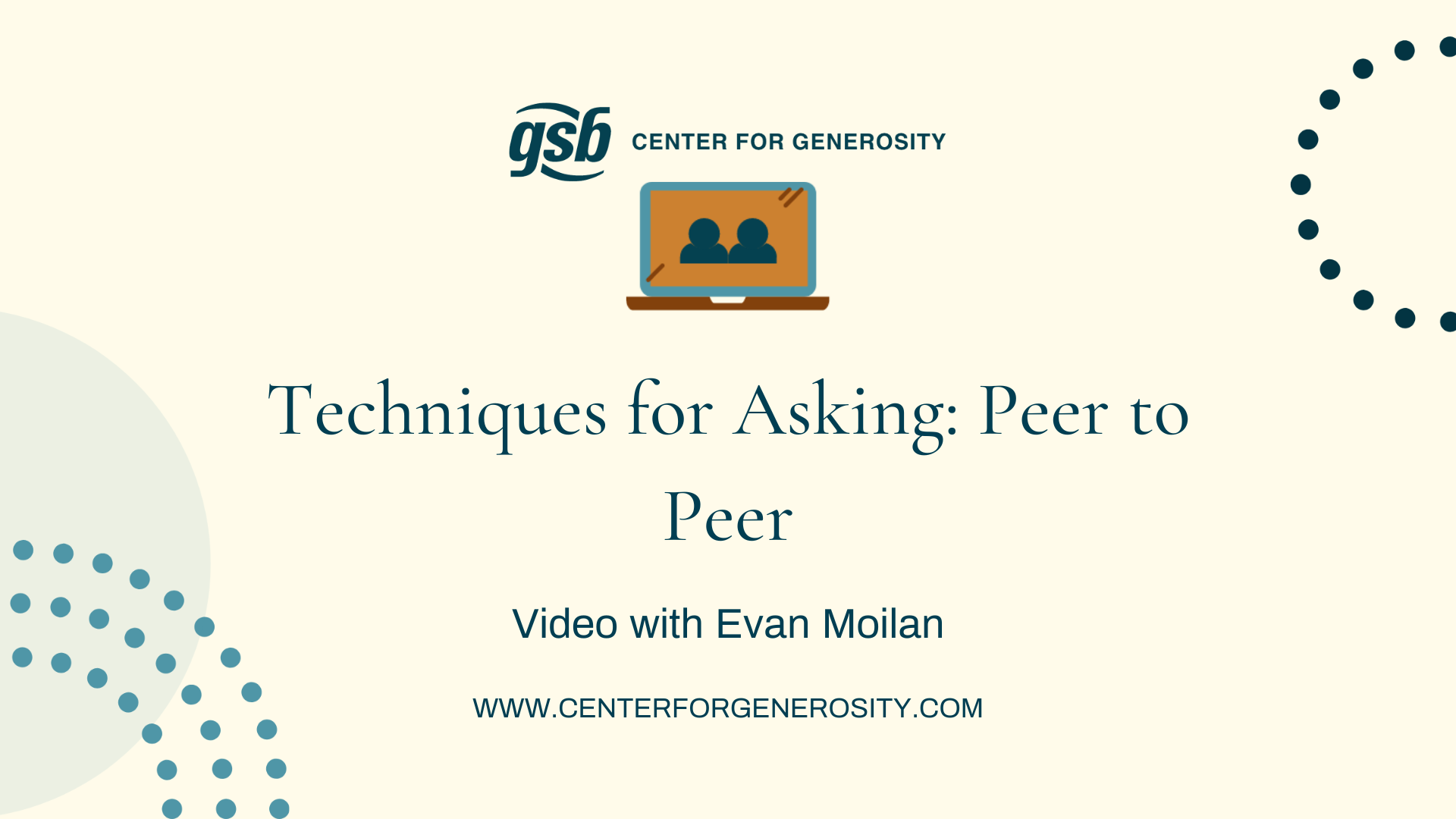Resource Library
Search by Topic
- 10 Steps of Fundraising
- Acknowledgements
- Annual Fund
- Appeal Letters
- Board Governance
- Capital Campaigns
- Case Development
- Challenge Gifts
- Congregation Governance
- Congregations
- Crisis Management
- Database
- Development Councils
- Development Plan
- Donor Relations
- Executive Leadership
- Giving Trends
- Gratitude
- Human Resources
- Lapsed Donors
- Major Gifts
- Marketing
- Matching Gifts
- Mission
- Non-Profits
- Planned Giving
- Public Relations
- Recurring Giving
- Samples
- Self-Care
- Special Appeals
- Special Events
- Stewardship
- Stewardship Appeal
- Storytelling
- Strategic Planning
- The Ask
- Theology
- Tributes
- Volunteers
- Wealth Screen
- Websites
- Youth Fundraising
How to make an in person ask
In this session we'll share the best practices for asking for a gift. Whether you've never asked, or just want a refresher, participants will leave this session with new and renewed confidence to invite others to generosity.
Asking donors to level up their Giving
Donors who find a comfortable gift level can stay there for years. Growing the gifts from these donors is key to building a robust giving program. In this Roundtable session, we’ll outline who, how, and when to encourage these givers to grow their giving in greater annual fund support, major or special gifts, and even estate gifts.
Sample Gift Intent Form for Legacy Gifts
Using a gift intent card or form, especially for legacy gifts, can help provide clarity from the donor about their wishes. Because the donor will not be alive to speak about their wishes when the gift is realized, an intent form can help ensure you honor them. It can help the organization plan its budget, and it helps maintain institutional knowledge. Here is a sample you can download and adapt for your own organization.
Fundraising Writing
From Thank You to Help! What you say – and how you say it – matters. In this session we’ll talk about some of the pitfalls in fundraising writing, differences to consider across various mediums, and how to improve our writing and messaging for better donor engagement. Want to workshop your own written communication? Bring your letter, email, or donor invitation to talk through it together!
Sample Gift Intent Card
Using a gift intent card or form can help provide clarity from the donor about their wishes. It can help the organization plan their budget, and it helps maintain institutional knowledge. Here is a sample you can download and adapt for your own organization.
Evaluating the 1:1 Donor Portfolio, Seeing the right people
Face to face visits are the most effective fundraising approach to build donor relationship, but they are time consuming in the short term while the results may not be realized for a prolonged period of time. How do you know if you're seeing the "right" people? How do you balance the number of visits between known givers and potential, but lesser known, givers? With tight budgets and limited human resources, reassessing your 1:1 Donor Portfolio is an important part of strategically managing your fundraising effort. At this Roundtable session, we'll talk about how to build a donor portfolio, assess an existing list, and leave with confidence knowing when to add and remove prospective givers.
Techniques for Asking One-to-One
Fundraisers say the most intimidating responsibility they bear is making personal, individual asks for financial contributions. What should I say? How do I transition from small talk to asking for their financial support? What if they say no? If the thought of asking someone to give a specific amount to your organization or cause leaves you tongue-tied or hyperventilating, join us for a round table discussion for guidance that will equip you for your next donor meeting and tips to help minimize those sweaty palms and sleepless nights.
Techniques for Asking: Cottage Meetings
Cottage meetings are small, brief and intimate events held at a donor’s home. Cottage meetings are a wonderful way to inform and inspire major donor prospects, setting the stage to invite a first gift or upgraded gift. Cottage meetings also work as a way to encourage a sense of community among donors. We will discuss what cottage meetings look like, who should be involved and how to conduct effective follow up.
Techniques for Asking: Peer to Peer
The #1 reason anyone makes a charitable gift in the U.S. is because they were asked. #4 is because they care about the person who is asking. Peer-to-Peer giving engages the power of influence from those who already care for your organization, to engage new donors and extend your reach and impact. In this session we’ll talk about: -The fundamentals of Peer-to-Peer -Tools available to make Peer-to-Peer available to every organization regardless of size -Leveraging reasons #2 & 3 and other keys to success -Conversion of new donors into giving beyond Peer-to-Peer
Challenge and Matching Gifts
Challenge and matching gifts will stimulate a response from additional donors and help move some donors to higher levels. They also assure larger donors that your organization is worthy of major investment.
Talking to Major Donors
How you engage and visit with a donor makes a difference. Remember to let them talk because they will remember more of what they say than you say. Leading them to self-inspire is one of the best ways to grow a major donor.











